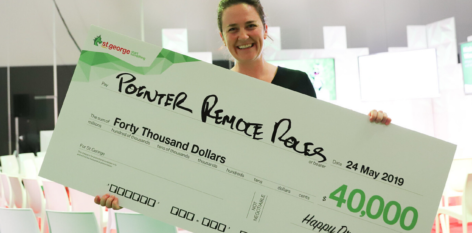This post-lockdown festive season is going to be different. And it’s not such a bad thing.
It’s hard to refrain from using the C-word this year, so I’m not even going to try. Especially that the COVID-19 pandemic has one-handedly changed many of our stagnant patterns of living. It has prompted us to stop, pause and ponder the ways we work, study, shop and travel. And for this alone, we should be grateful.
A waste rethink
A rise of the homebody economy (buying things for the home and to be used or cooked at home), coupled with a greater awareness of the environment under lockdown, has led to a surge in choosing local and second-hand. As smarter consumers, we’ve finally started to analyse where our food and other goods come from, realising that we can make do with less, whilst maintaining quality.
This trend is amazing news as – both in Australia as in the rest of the world – we’ve been drowning in excess. Every year, approximately 1.3 billion tons of food is wasted. In Australia, over 5 million tonnes of food ends up in landfill, which is enough to fill 9,000 Olympic sized swimming pools. As for our fashion consumption, Americans alone throw away about 10.5 million tonnes of clothing every year. Australia chips in big time too, as every 10 minutes, around 6 tonnes of garment land in our landfills.
In hindsight, this mindless consumption has created mountains of waste and valleys of exploitation in Asia. It has also depleted our wallets, soils and natural resources. But slowly yet surely, we’re becoming more mindful about how we vote with our dollars.
Shift to thrift
A circular economy is a smart way of addressing the issue of waste. If we reuse and reclaim as much as we can, less plastic ends up in our trash and fewer resources – like water and energy – are used to produce new stuff.
Before the pandemic, thrifting has been considered a necessity for those with limited budgets. But not anymore. In the bewildering post-COVID reality, more and more people are giving pre-loved items a second chance at life, and we’re all the better for it. The trend to buy second-hand, scouring local op-shops and online marketplaces for vintage treasures of clothing, furniture and décor, means we’re much less reliant on big chain suppliers flooding our markets with mass-produced, low-quality items.
Think local
Part of the beauty of a circular economy is that it works wonders for local communities. As last year’s bushfires proved, there’s nothing like supporting what’s close to home. A recent report by Ernst and Young claims that only by going circular, we can bring the jobs, savings and income the cities need to recover from the pandemic.
The ban on international flying has shifted the ways we perceive holidaying. Suddenly, a trip from Sydney to Byron Bay seems like an exciting change of scenery. Since we can’t fly to Europe to shop a festive storm at their winter Christmas markets, we’re enjoying the abundance of local, Australian-made produce. Looking at the prevalence of sourdough on Instagram, we’ve started to cook and bake more. Urban farming and home gardening are also on the rise.
“Luckily for us and the planet, people have started to care where they’re sourcing their food. Eating local and buying consciously is a way of supporting local producers, and we’re really grateful to our customers for doing so throughout the Christmas season,” says Pierre Issa co-Founder of Pepe Saya, the Australian artisanal cultured butter maker. No stranger to keeping things local, Pepe Saya is made in a warehouse in Sydney by a team of 20 butter-makers who churn out 12 tonnes of butter each week, using cream sourced from farms in Picton, Wauchope, the Hunter Valley, Gippsland and Allansford.
“Our big call to action is eating local, buying consciously, food security and supporting local producers. Understanding where your food is coming from and supporting local is a really important idea for us- whether it is buying Pepe Saya or from any other local producer,” says Pierre (Pepe).
Similarly, Crumpets by Merna (because what else goes with butter?)focus their Sydney-based fermented small batch crumpets business on using the best local produce sing Pepe Saya Buttermilk, wholemeal flour from Tamworth, Australian blueberries, Zokoko Chocolate and Olsson’s sea salt.
(Hungry yet?)
It seems Australians are keen to do their bit with a recent study by Mintel showing Australians’ desire to buy locally grown food is gaining momentum. In July of 2019 44% percent of consumers said they try to buy locally grown food, this rose to 48% after the December 2019 bushfires and rose again to 52% during the COVID-19 crisis.
This Christmas, normalising the gifting of used items, shopping locally and supporting local food producers are all ways we can inject some much-needed cheer into our community.




